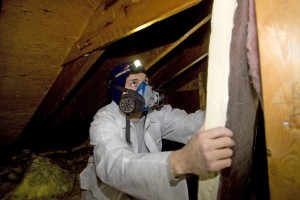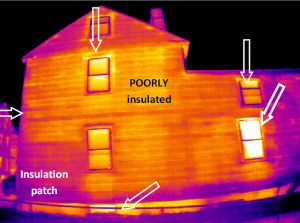by Peter Crawley, EBI Consulting
Cross-posted from the Sustainable Business Leader Program blog. See the original post here.
New England property owners are beginning to understand the benefits of a “green” building: higher occupancy rates, higher rental rates and lower utility costs, to name a few. But working with just the “sticks and bricks” of a building can make it only “light green.”
To go deeper, a building manager must engage the community that occupies the building: the tenants. A building and its tenants are two interconnected systems that must work in-tandem to produce eco-efficiency. Even if a building is built to green standards, it will not perform in a deep green manner if the occupants are not actively participating in green practices. Ultimately, it is the tenants who recycle, conserve water and energy, and choose green modes of transportation. The U.S. Green Building Council (USGBC) recognized this and introduced the LEED Operations and Management (O&M) certification. To gain LEED O&M certification, owners must work with tenants to promote a variety of green practices in the building. At the same time, LEED O&M isn’t the only strategy to harmonize landlord/tenant green operations.
Promoting Green Practices
Many progressive landlords, such as Hines Real Estate Investment Trust, are instituting “green tenant” programs of their own design. These programs provide a system to green tenant behaviors as well as better coordinate them with the overall green protocols of the building, such as recycling or transportation programs (In most cases, tenant greening programs also qualify for points under LEED O&M). Another New England landlord, Equity Office Properties, recently completed a greening program for its own office operations and is in the planning stages of engaging its tenants via a similar program.
Landlords with a desire to go “deep green” realize they can only get there via tenant involvement; and conversely, tenants that desire green operations realize they need the landlord to adopt green practices for the building as well. When the two parties acknowledge this interdependence, a fresh, collaborative relationship around green initiatives develops that produces opportunities and benefits for both parties.
The Landlord’s Role
To be successful, tenant greening programs need to be well designed and actively managed by the landlord. Programs should cover at least the following key areas: energy conservation, waste management, water conservation, modes of transportation, pollution prevention, and sustainable management practices.
Key landlord related actions include:
· Clear communication plan and instructional materials to explain program and green protocols of building;
· Program designed to be useful to tenants of various sizes and levels of green practices;
· Landlord willingness to separately track tenant usage information for energy, water and waste;
· Landlord willingness to share cost savings from conservation achievements with tenants, and include “green lease” covenants in contracts.
To prove its commitment to the greening program, the landlord should be willing to fund at least low cost green upgrades, such as occupancy sensors, water faucet aerators and wireless utility meters – which also add long-term value to the landlord’s asset. The landlord should also require third-party building vendors, whenever possible, to track product/service usage by tenant (e.g., for recycling). Additionally, the landlord should research utility company green incentive plans, as well as new greening technologies, and make them available to tenants.
The Tenant’s Role
As for the tenant, key components for successful greening programs include:
· Creating an internal “Green Team” with representation from diverse management levels and operational areas;
· Establishing baseline performance metrics prior to instituting improvements;
· Showing a commitment to tracking metrics to highlight progress;
· Holding educational and training sessions for employees;
· Displaying attractive signage regarding green behaviors (e.g., water conservation, light and computer shut-offs);
· Communicating and celebrating achievements, translated into dollar savings, career advancements and environmental benefits.
Tenants should realize that in addition to cost reductions, the benefits of a greening program include increased employee engagement and productivity, as well as public relations enhancements.
The U.S. Environmental Protection Agency offers an energy-focused tenant greening program called “Bring Your Green to Work” that includes training videos, tip sheets and posters (See www.EnergyStar.gov). For a program that addresses the more specific challenges and opportunities of their portfolio, landlords can work with consultants to develop customized greening programs. Landlord-sponsored green tenant programs not only reduce building operating costs and carbon emissions, but also improve landlord-tenant relationships, which in turn promote lease renewals and long-term tenancies.
Peter Crawley is the former Director of the Sustainable Business Leader Program and now serves as the Director of Sustainability Services at Burlington, Mass.-based EBI Consulting, an environmental consulting firm offering a variety of green building services.









